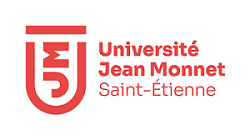Mechanical signals modulated vascular endothelial growth factor-A (VEGF-A) alternative splicing in osteoblastic cells through actin polymerisation.
Résumé
Since VEGF-A is involved in mechanically induced bone gain and because vegf exists under 6 isoforms exerting various biological effects, we studied vegf isoform expression and VEGF protein production in osteoblastic cells (rat Ros17/2.8 and human osteoblasts) submitted to 4 mechanical regimens. Mechanical regimens (1% stretch deformation) were designed with a fixed number of cycles (450) delivered at various frequencies (0.05 to 5 Hz). We found a negative correlation (R(2)=0.76, p<0.0001) between production of soluble VEGF and mechanical stretch frequency and a positive correlation (R(2)=0.99, p<0.0001) between production of matrix-bound VEGF and mechanical stretch frequency. mRNA expressions of soluble VEGF isoforms (121, 165) were specifically expressed under low frequency while matrix-bound VEGF isoforms (206, 189, 165, 145) were specifically expressed under high frequency in human osteoblasts. As f-actin stress fiber formation was significantly increased selectively in high frequency conditions, we disrupted actin fibers in Ros17/2.8 and found that immobilisation of VEGF was abolished. Conversely, Jasplakinolide treatment which increases stress fiber formation was able to mimic high frequency stretch-induced immobilisation of VEGF. Thus, we speculate that the stretch-induced increase in cell tension is responsible for matrix-bound vegf isoform production. Mechanically induced selection of soluble or matrix-bound VEGF production may modify osteoblast and endothelial cell crosstalk crucial during osteogenesis and fracture healing.
Origine : Fichiers produits par l'(les) auteur(s)
Loading...

